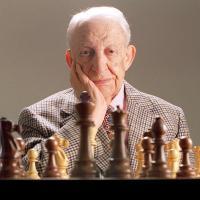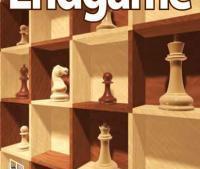
History of Blindfold chess
The first known blindfold event in Europe took placein 1266.Philidor demonstrated his ability to play up to three blindfold games simultaneously in 1783 with great success, with newspapers highlighting his achievement, having taught himself to visualize the board while in bed at night when he had trouble sleeping.
Morphy held in 1858 a blindfold exhibition against the eight strongest players in Paris with the stunning result of six wins and two draws. Other early masters of blindfold chess were Louis Paulsen, Joseph Henry Blackburne (he played up to 16 simultaneous blindfold games) and the first world champion Wilhelm Steinitz, who played in 1867, six simultaneous blindfold games (three wins, three draws). It was seen by these masters as a good source of income.
As time went by the records for blindfold exhibitions increased. In 1900 Harry Nelson Pillsbury played 20 games simultaneously.In 1924 Alekhine played 26 simultaneous blindfold games against very strong opponents with the score of +16 -5 =5.Réti bettered this record by playing 29 players simultaneously and amusingly commented on his poor memory after leaving his briefcase behind after the event.
On 1934 Alekhine set the new world record by playing 32 blindfold games, with the result +19 -5 =5. Edward Lasker was the referee for this event.
George Koltanowski set the world's blindfold record on 1937 by playing 34 chess games simultaneously while blindfolded, winning 24 games and losing 10, over a period of 13 hours. The record was included in the Guinness Book of Records and is generally accepted as the world record to this day.Later Miguel Najdorf claimed to have broken that record, but his efforts were not properly monitored the way that Koltanowski's was. Najdorf's first record was against 40 opponents (+36 =1 -3) and was organised in an effort to gain sufficient publicity to communicate to his family that he was still alive, as he had remained in Argentina after travelling from his native Poland to compete in the 1939 Chess Olympiad. He increased this record to 45 opponents in 1947, with the result of 39 wins, four draws and two losses.However, he had access to the scoresheets, and there were multiple opponents per board.Koltanowski claimed that he could have managed 100 games under those conditions.
There have been no serious attempts to increase the record since then, due to lack of interest in mere numbers.
One other notable blindfold record was set in 1960 by Koltanowski,when he played 56 consecutive blindfold games at a rate of 10 seconds a move. The exhibition lasted 9 hours with the result of 50 wins and six losses.Koltanowski's specialty was conducting a Blindfold Knight's Tour on boards of up to 192 squares.
While blindfold chess has been recommended in moderation by many sources as a method of increasing one's playing strength, simultaneous blindfold exhibitions were officially banned in 1930 in the USSR as they were deemed to be a health hazard. Mikhail Botvinnik also warned against it. Blindfold players have reported that it is more tiring than regular play, even if faster time controls are used.
Today there are Blindfold Chess Tournaments held throughout the year, with the highest profile event being the Melody Amber Tournament, held in Monte Carlo. This event is partly funded by the billionaire Correspondence Chess Champion Joop van Oosterom and attracts many of the world's chess elite to compete in unique circumstances. Of the modern day players, Vladimir Kramnik, Viswanathan Anand, Alexei Shirov and Alexander Morozevich have proven themselves to be particularly strong at blindfold chess, being alternating winners of the Amber Tournaments between 1996 and 2006.






